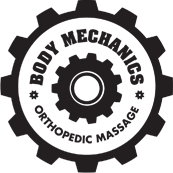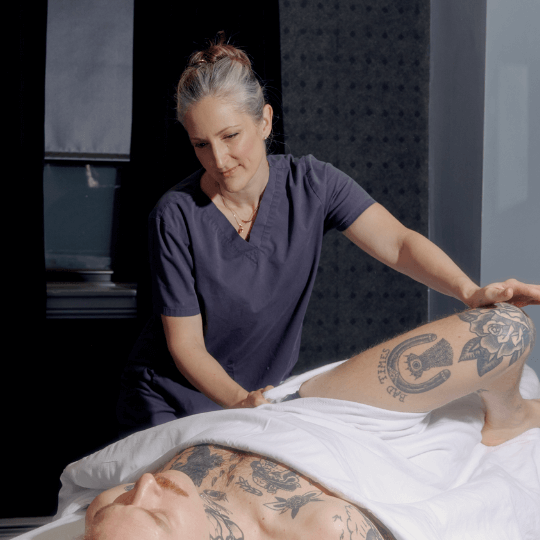Migraine and headache disorders are debilitating conditions that affect millions of people globally. For many, finding effective relief can be a challenge, often involving a combination of medications, lifestyle changes, and alternative therapies. One such alternative therapy that has gained significant attention is massage therapy.
At Body Mechanics, we specialize in helping individuals harness the therapeutic benefits of massage to manage pain and improve overall well-being. In this blog, we will explore how massage therapy plays a pivotal role in managing migraines and headaches.
Understanding Migraines and Headaches
Before diving into how massage therapy helps, it’s essential to understand the nature of migraines and headaches. While both conditions involve pain in the head, they differ significantly:
- Tension Headaches: These are the most common type of headaches, often caused by stress, muscle tension, or poor posture. The pain is usually mild to moderate and feels like a tight band around the head.
- Migraines: Unlike tension headaches, migraines are more complex and often accompanied by severe pain, nausea, sensitivity to light, and visual disturbances. Migraines can last anywhere from a few hours to several days and may involve triggers such as hormonal changes, certain foods, or stress.
- Cluster Headaches: These are rare but extremely painful, often occurring in cyclical patterns or “clusters.”
Massage therapy can provide relief for many of these conditions by addressing the underlying triggers and symptoms.
How Massage Therapy Helps in Migraine and Headache Management
Massage therapy offers a range of benefits for those dealing with migraines and headaches, making it a valuable component of a comprehensive treatment plan.
1. Reduces Muscle Tension
One of the primary causes of tension headaches is tight muscles in the neck, shoulders, and upper back. Massage therapy helps:
- Relax tight muscles.
- Improve blood circulation.
- Reduce the physical stress that contributes to headache onset.
By alleviating muscle tension, regular massage sessions can help prevent tension headaches from developing in the first place. For more information on how massage can target muscle tension effectively, explore our Trigger Point Therapy NYC.
2. Improves Blood Circulation
Poor blood flow can contribute to headache pain, especially in cases of migraines. Massage helps improve circulation by:
- Stimulating blood flow to the affected areas.
- Enhancing oxygen and nutrient delivery to muscles and tissues.
- Supporting the body’s natural healing processes.
Better circulation often translates to reduced headache frequency and intensity. Learn more about techniques that promote circulation in our Swedish Massage NYC section.
3. Reduces Stress and Promotes Relaxation
Stress is a common trigger for both migraines and tension headaches. Massage therapy is widely known for its relaxation benefits, which include:
- Lowering cortisol levels (the stress hormone).
- Promoting the release of endorphins, the body’s natural painkillers.
- Encouraging a state of deep relaxation that helps the body recover from stress-induced pain.
To understand how stress impacts your overall wellness, read our Guide to Stress Management.
4. Addresses Trigger Points
Trigger points, or knots in the muscles, are a frequent cause of referred pain that mimics headache symptoms. A skilled massage therapist can:
- Identify and release trigger points.
- Provide targeted relief to areas contributing to head pain.
Trigger point therapy is particularly effective for tension headaches and migraines with a muscular origin. Check out our Trigger Point Therapy NYC page for detailed insights.
5. Regulates Hormonal Imbalances
Hormonal fluctuations are a well-known trigger for migraines, especially in women. Massage therapy helps regulate the endocrine system by:
- Promoting lymphatic drainage to eliminate toxins.
- Supporting hormonal balance through relaxation and stress reduction.
While it may not eliminate hormonal migraines entirely, regular massage can make symptoms more manageable. If you’re interested in hormone-related therapies, explore our Prenatal Massage Tips.
6. Improves Sleep Quality
Poor sleep is both a cause and a symptom of chronic headaches. Massage therapy promotes better sleep by:
- Reducing stress and anxiety.
- Encouraging the production of serotonin, which the body converts to melatonin (the sleep hormone).
- Relieving physical discomfort that interferes with restful sleep.
Improved sleep patterns often lead to a significant reduction in headache frequency. For practical sleep tips, visit our Guide to Sleep and Recovery.
Types of Massage for Migraine and Headache Relief
Not all massage techniques are created equal when it comes to managing migraines and headaches. Here are some of the most effective types:
1. Swedish Massage
This gentle, full-body massage technique is excellent for relaxation and stress reduction. It helps relieve tension in the muscles and promotes overall well-being.
2. Deep Tissue Massage
Deep tissue massage targets the deeper layers of muscle and connective tissue. It’s particularly effective for chronic tension headaches caused by muscle tightness.
3. Trigger Point Therapy
As mentioned earlier, this technique focuses on releasing knots in the muscles that refer pain to other areas, such as the head and neck.
4. Craniosacral Therapy
This gentle, hands-on technique focuses on the craniosacral system—the membranes and fluid surrounding the brain and spinal cord. It’s highly effective for migraines and headaches with neurological or stress-related origins.
5. Aromatherapy Massage
Incorporating essential oils like lavender or peppermint into the massage can enhance its effectiveness. These oils are known for their calming and analgesic properties. According to a study by the National Library of Medicine (link here), essential oils can significantly reduce headache pain when used correctly.
Additional Lifestyle Tips for Migraine and Headache Prevention
While massage therapy is highly beneficial, combining it with other healthy habits can amplify its effects. Here are some tips:
1. Stay Hydrated
Dehydration is a common migraine trigger. Aim to drink plenty of water throughout the day to maintain optimal hydration levels.
2. Practice Good Posture
Poor posture can lead to muscle tension and headaches. Be mindful of your posture, especially if you work at a desk for long hours.
3. Manage Stress Effectively
Incorporate stress-reducing activities like yoga, meditation, or deep-breathing exercises into your daily routine to complement the relaxation benefits of massage. Learn more about Yoga Therapy at Body Mechanics.
4. Identify and Avoid Triggers
Common migraine triggers include certain foods, caffeine, and lack of sleep. Keep a headache diary to identify patterns and minimize exposure to these triggers.
5. Maintain a Consistent Sleep Schedule
Irregular sleep patterns can exacerbate migraines. Aim for 7-9 hours of quality sleep each night.
When to Consider Massage Therapy
While massage therapy can be highly beneficial, it’s important to know when it’s appropriate. Here are some situations where massage can be particularly helpful:
- Chronic Tension Headaches: Regular sessions can prevent headaches from recurring.
- Stress-Induced Migraines: Massage helps manage stress levels, reducing migraine triggers.
- Complementary Treatment: Massage works well alongside other therapies like medication or physical therapy.
- Postural Issues: If poor posture contributes to your headaches, massage can correct muscular imbalances.
What to Expect During a Massage Session
At Body Mechanics, we tailor each session to your specific needs. Here’s what you can expect:
- Initial Consultation: Your therapist will discuss your headache history, triggers, and goals.
- Customized Treatment Plan: Based on your needs, the therapist will recommend specific techniques and focus areas.
- Relaxing Environment: Our treatment rooms are designed to promote relaxation and comfort.
- Post-Massage Guidance: After your session, we provide tips on maintaining the benefits, such as stretches or stress management techniques.
Incorporating Massage into Your Routine
For optimal results, consistency is key. Consider the following tips:
- Schedule Regular Sessions: Weekly or bi-weekly massages can help prevent headaches.
- Combine with Other Therapies: Incorporate massage into a holistic treatment plan, including exercise, hydration, and mindfulness practices.
- Track Your Progress: Keep a headache journal to monitor improvements over time.
Why Choose Body Mechanics?
At Body Mechanics, we are committed to providing top-tier massage therapy services tailored to your unique needs. Our therapists are highly trained in advanced techniques and take a personalized approach to every client. With a focus on both physical and mental well-being, we aim to empower you to take control of your health.
Massage therapy is a powerful tool in managing migraines and headaches, offering both immediate relief and long-term benefits. By addressing the root causes of pain and promoting overall wellness, massage can significantly improve your quality of life. If you’re ready to explore the benefits of massage for headache management, book a session with Body Mechanics today.
Take the first step towards a headache-free life—your body will thank you!

